If you're not familiar with durags, you may wonder what they are and why they are so significant in black culture. Durags, or wave caps, are head coverings made of nylon, silk, or polyester materials commonly worn to protect and maintain hairstyles overnight or during physical activity.
But durags carry more significant meanings and contexts within black culture that are often overlooked or misunderstood. Whether durags are racist has been a topic of debate, and it's essential to understand the significance and symbolism behind this accessory for black people.
Durags have a deep-rooted history in black culture, dating back to the 19th century. They were initially used to cover natural hair during the slave trade and protect it during the night. Over time, durags evolved into a fashion statement in the 1970s and became mainstream in the 1990s.
However, there are also negative connotations associated with durags, such as racial stereotypes. Some people view durags as a symbol of criminality or gang affiliation, which is harmful and untrue. It's crucial to acknowledge the impact of stereotypes on black culture and approach this topic with sensitivity.
In this article, we'll explore the significance of Durags in black culture, their association with racial stereotypes, their use in professional settings, their representation in pop culture and media, and the ongoing conversations surrounding them in the 21st century.
Durags as a Symbol of Black Identity and Pride
For Black men and women, durags have been a critical symbol of identity, pride, and cultural expression for generations. The durag, a wave cap, is a head covering worn to protect hair and promote the wave pattern in natural hair. While initially created for practical purposes, the durag has become a broader symbol of self-care, respect, and style.
Durags are prevalent among African American communities, worn in various styles, patterns, and colors. Black people, in particular, have embraced the durag as a form of self-expression and identity. For many, it represents a connection to their African roots and a way to showcase their cultural pride in a society that has historically marginalized black identity and culture.
Durags have also been a crucial symbol of community and belonging. Wearing a durag often signifies membership in a particular community, whether a gang, sports team, or fraternity. It has also been used to symbolize one's music or artistic preferences.
Despite its sometimes negative connotations, the durag remains an important symbol of black identity and pride. It represents a way for Black women and men to celebrate their culture and reclaim their space in a society that has long tried to diminish their worth.

Durags and Racial Stereotypes
Acknowledging the association of durags with racial stereotypes that have plagued black culture for centuries is important. The stereotype of the "thug" or "gangster" wearing a durag has perpetuated negative connotations and contributed to the ongoing racism against black people.
As such, it is crucial to approach the topic of durags with sensitivity and to avoid perpetuating harmful stereotypes. It is essential to understand the significance of durags within black culture and to recognize them as a symbol of black identity and pride rather than a sign of criminality.
Furthermore, it is crucial to acknowledge the impact of stereotypes on black culture and actively work to dispel them. This includes promoting positivity and representation of black individuals in all forms of media, including those who wear durags.
Racism against black people has been a pervasive issue for far too long, and it is our responsibility to work towards eliminating it in all its forms. This includes challenging the negative stereotypes associated with durags and recognizing the significance of this cultural symbol within the black community.
Durags in the Workplace and Legal Context
As a symbol of black culture, durags can carry a strong sense of identity and pride. However, legal and dress code issues can arise when it comes to wearing them in the workplace.
The image and perception of a person can be important in certain professions; therefore, some workplaces have implemented dress codes that prohibit the wearing of durags at work. While dress codes are legal, they can be controversial when it comes to the issue of racial discrimination.
Some argue that dress codes that exclude durags, braids, or other natural hairstyles unfairly target black individuals. In fact, in 2019, California became the first state to pass a law banning workplace and school dress codes that discriminate against people based on their natural hair. For a deeper look into this debate, you may be interested in our article 'Are Durags Allowed in School?'
It is important to consider the significance of durags as a symbol of identity and expression within black culture. While dress codes can be important in maintaining a professional environment, avoiding discriminatory actions against individuals based on their cultural background or appearance is crucial.

In summary, the issue of wearing durags in the workplace and legal context involves a balancing act between dress codes, image perception, and cultural expression. While there are legal implications, it is crucial to acknowledge the significance of durags as a symbol of identity and expression within black culture.
Durags in Pop Culture and Media
Over the years, durags have become more than a functional accessory for protecting hairstyles overnight or during physical activities. They have increasingly gained relevance in pop culture, particularly in music, sports, and social media.
Many artists, including rappers and singers, have been spotted wearing durags on and off stage, creating a new fashion trend. For instance, in the late 90s, rapper Jay-Z popularized the "wave cap" style of durag, which formed deep waves in his hair.
Professional athletes in the NBA and NFL have also embraced the durag as a part of their on-court fashion. In addition to their functional use in protecting hairstyles during games, durags symbolize style and fashion.
If you're curious about the rules and regulations surrounding using durags in professional basketball, check out our article on 'Can NBA Players Wear Durags?'
Social media influencers have also contributed to the acceptance of durags as a form of self-expression and beauty. Platforms like Instagram and TikTok have provided a space for many to showcase their durag styles, whether different fabrics, patterns, or ways of tying them.
However, the acceptance of durags in pop culture has not been without controversy. Some argue that the media's portrayal of durags reinforces racial stereotypes and perpetuates negative perceptions of black people. Others have criticized the exclusion of women from the trend.
The Durag Movement in the 21st Century
In 2023, the durag continues to serve as a form of self-expression, reclaiming space and embracing natural hair. Today, discussions about durags are more prevalent than ever, with podcasts and social media platforms providing a space for black people to share their experiences and opinions. This has led to the emergence of the durag movement, which aims to celebrate and elevate the cultural significance of durags.
One notable podcast that has contributed to the conversation is "Durags and Conversations," hosted by two black men who discuss various topics, including the importance of durags within black culture. The podcast allows black men to share their experiences, feelings, and thoughts about durags and how they relate to identity, beauty, and style.
The durag wave has also spread to women, with many embracing the style to protect and promote their natural hair. Cornrows and other protective styles are often worn under durags, representing a shift towards celebrating and embracing natural beauty.
The durag has also made its way into pop culture, with waves of NBA and NFL players sporting the style both on and off the court. Social media platforms have also played a role in the durag's resurgence, with Instagram and TikTok users sharing tutorials on achieving the perfect wave.

However, using durags in pop culture has also sparked debates about cultural appropriation and the commercialization of black culture. It is important to acknowledge the historical significance and cultural context of durags, and to ensure that they are not reduced to just a trend or fashion statement.
The Durag movement represents a larger conversation about black identity and the importance of cultural expression. As discussions continue to evolve, it is essential to approach the topic with sensitivity and understanding of its significance within black culture.
Conclusion
In conclusion, understanding the cultural significance of durags is crucial in dispelling stereotypes and engaging in productive conversations about racism and black identity. As we have seen, durags have a rich history rooted in African culture and have evolved into a black identity and pride symbol. However, they have also been associated with racial stereotypes, and it is essential to approach the topic sensitively.
Moreover, durags have been controversial in professional settings, with debates surrounding their use in the workplace and legal implications regarding dress codes. In pop culture, they have been embraced by artists and athletes, impacting beauty standards and gender norms.
As we navigate conversations about durags in the 21st century, we must acknowledge the ongoing durag movement and its significance in reclaiming space and embracing natural hair. Doing so, we can work towards dispelling harmful stereotypes and fostering greater understanding and appreciation for black culture.
FAQ
Q: Is wearing a durag racist?
A: No, wearing a durag is not inherently racist. The durag is a garment commonly worn by many black men and women as a way to protect their hair, promote hair growth, and maintain neat hairstyles.
Q: What are the meanings and contexts of durags in black culture?
A: Durags have various meanings and contexts within black culture. They are often worn to maintain hairstyles, especially dreadlocks or locs. Additionally, durags have become a symbol of black pride and empowerment. They also hold significance in terms of fashion and style.
Q: Who popularized the durag?
A: The durag gained significant popularity in the 1990s, thanks to black celebrities like Allen Iverson. Iverson's iconic hairstyle and frequent durag use made it a fashionable accessory. Since then, many black artists and entertainers have embraced the durag as part of their personal style.
Q: Are there any cultural events or celebrations related to durags?
A: There is a cultural event called Durag History Week that celebrates the durag's significance in black culture. This week-long celebration includes various activities, events, and discussions around the history and cultural significance of the durag.
Q: Can anyone wear a durag?
A: While durags have a history rooted in black culture, anyone can wear a durag. It is important, however, to understand and respect the cultural context and significance of the durag when wearing it.
Q: What are some other ways to style a durag?
A: Besides its primary function as a hair accessory, durags can be styled differently. Some people choose to wear their durags with the tails hanging loose, while others prefer to wrap the tails tightly around their heads.
Q: Are there any famous events or festivals related to durags?
A: Durag Fest is a Nevada annual event celebrating the Durag culture. It includes live performances, fashion shows, and showcases various durag styles.
Q: Is there a history behind the durag?
A: The durag has a history dating back to the 19th century. Originally, it was worn as a headscarf by women in Africa and enslaved Africans in the Americas. Over time, it evolved into the modern durag we see today.
Q: What is the purpose of wearing a durag?
A: The primary purpose of wearing a durag is to protect the hair, keep it neat, and maintain hairstyles. Many black men and women use durags to preserve various hairstyles, especially those with locs or dreadlocks.
Q: Does wearing a durag have any social or cultural significance?
A: Yes, wearing a durag can have social and cultural significance within black communities. It is seen as an expression of black identity, style, and pride. However, it is important to note that opinions and significance may vary among individuals.

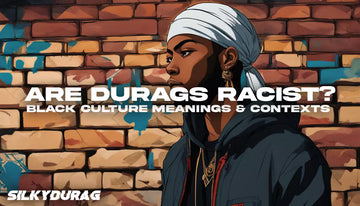
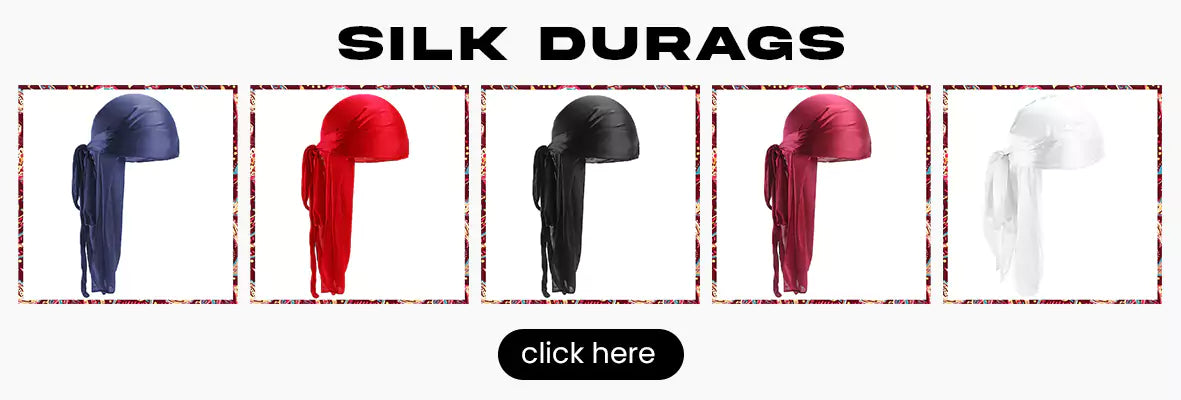



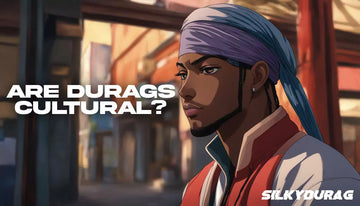
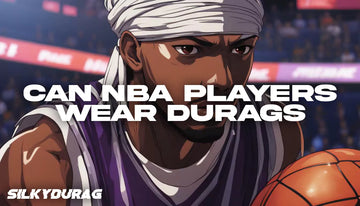
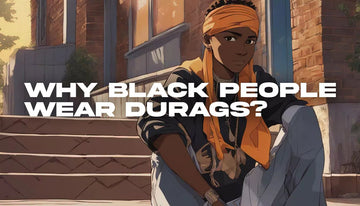

You are more mistaken than you know. As a black man, I find do-rags to associate with gang type elements. No black professional would ever wear something like that in public. An embarrassment to black citizens not only in the US, but in Africa, as well.